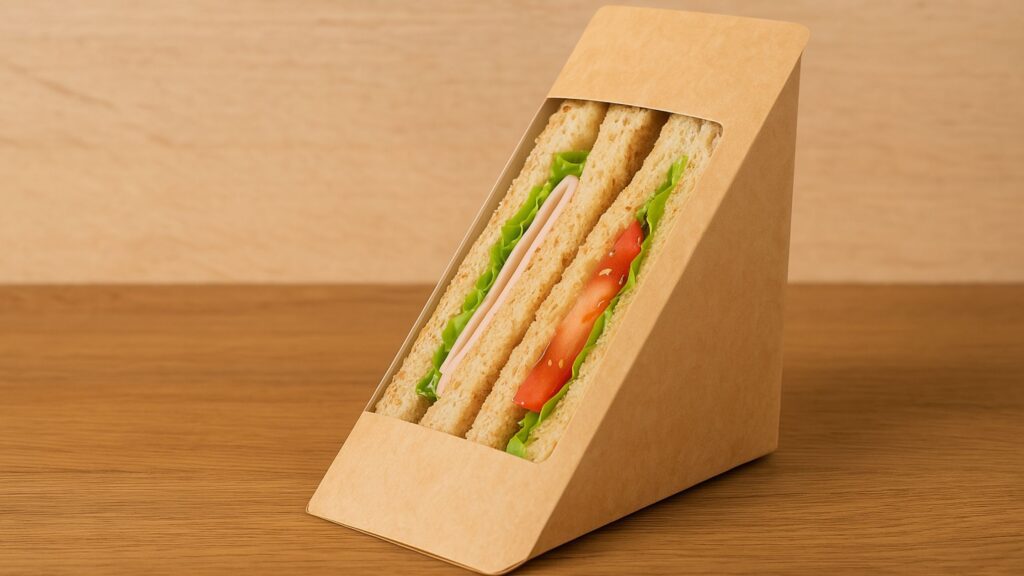Sandwiches are among the most popular food choices for people on the go, whether purchased from a deli, supermarket, or café. However, the key to delivering a delicious, fresh, and visually appealing sandwich lies in its packaging. Proper sandwich packaging plays a crucial role in maintaining quality, extending shelf life, and making the product more attractive to consumers. In this comprehensive guide, we will explore the importance of sandwich packaging, different types available, and how businesses can make sustainable choices.
The Importance of Proper Sandwich Packaging
Sandwich packaging is not just about wrapping a sandwich in paper or plastic; it serves multiple essential functions:
- Preserving Freshness: A well-packaged sandwich stays fresh longer, preventing it from drying out or becoming soggy due to moisture loss or absorption.
- Enhancing Convenience: Good packaging allows for easy handling, transport, and consumption without making a mess.
- Boosting Presentation: Attractive packaging makes sandwiches more appealing, increasing the likelihood of purchase.
- Ensuring Food Safety: Hygienic and durable packaging protects the sandwich from contamination, dust, and bacteria.
- Promoting Branding: Custom-designed packaging can serve as a marketing tool, reinforcing brand identity and customer recognition.
Types of Sandwich Packaging
Depending on the type of sandwich and the business’s needs, different packaging materials and designs are available. Below are the most common types:
1. Paper Wrappers
Paper-based wrappers are widely used for their affordability and eco-friendliness. They come in different types, such as waxed paper, greaseproof paper, and parchment paper. These wrappers are ideal for sandwiches that are eaten quickly and don’t require long-term storage.
2. Cardboard Boxes
Cardboard boxes, often with a clear window, offer a premium presentation while providing structural integrity to the sandwich. They are commonly used in grab-and-go setups like supermarkets and cafes.
3. Plastic Containers
Plastic clamshell containers and trays are used for pre-packaged sandwiches requiring extended shelf life. While they provide excellent visibility and protection, concerns about plastic waste have led many businesses to seek more sustainable alternatives.
4. Biodegradable and Compostable Packaging
With increasing awareness of environmental issues, many food businesses are opting for compostable or biodegradable packaging made from materials such as PLA (polylactic acid), bagasse (sugarcane fiber), or recycled paperboard.
5. Resealable Packaging
For convenience-focused consumers, resealable pouches or wraps allow them to save part of their sandwich for later without compromising freshness.
Sustainable Sandwich Packaging Options
Sustainability is a growing concern in the food industry, and sandwich packaging is no exception. Here are some ways businesses can make environmentally responsible choices:
- Use Recyclable Materials: Opt for paper-based or recyclable plastic packaging to minimize environmental impact.
- Reduce Plastic Usage: Switch to biodegradable plastics or alternative materials like compostable containers.
- Offer Minimalist Packaging: Reduce excess packaging while still ensuring protection and branding.
- Encourage Reusable Solutions: Some businesses provide reusable sandwich wraps made of beeswax or silicone.
- Partner with Eco-Friendly Suppliers: Sourcing from companies that prioritize sustainability helps reinforce a brand’s commitment to the environment.
Customizing Sandwich Packaging for Branding
Customized sandwich packaging is an excellent way for businesses to differentiate themselves and enhance brand recognition. Key elements to consider include:
- Logo and Branding: Printing the brand name, logo, and tagline on packaging helps build a professional image.
- Color and Design: Using eye-catching graphics and colors that align with the brand identity can attract customers.
- Product Information: Including details like ingredients, allergen warnings, and expiration dates ensures transparency and customer trust.
- Eco-Friendly Messaging: Highlighting sustainable materials or recycling instructions can appeal to environmentally conscious consumers.
The Future of Sandwich Packaging
With innovation in packaging technology, the future of sandwich packaging is shifting towards more sustainable, functional, and visually appealing solutions. Advances in biodegradable materials, smart packaging that monitors freshness, and packaging that reduces food waste will continue to shape the industry.
As consumers become more aware of their environmental impact, businesses must adapt by offering sustainable yet practical packaging solutions. Whether you’re a small café or a large food retailer, investing in high-quality, eco-friendly sandwich packaging is a step towards customer satisfaction and a greener planet.
Final Thoughts
Sandwich packaging is much more than just a container—it’s a crucial element in preserving freshness, enhancing convenience, and promoting sustainability. By choosing the right materials, considering branding opportunities, and focusing on eco-friendly options, businesses can make a significant impact on both their bottom line and the environment.
With the right packaging, a simple sandwich transforms into a well-presented, delicious, and responsible choice for consumers everywhere.
Related Articles
- Biodegradable Food Packaging: A Sustainable Solution for the Future
- Eco Friendly Food Packaging: A Sustainable Choice for the Future
- Tissue Paper Packaging: The Eco-Friendly & Elegant Solution
- The Importance of Bakery Packaging: Enhancing Freshness and Branding
- Gift Packaging: Making Every Present Special
- Jewelry Packaging: Elevate Your Brand and Unbox Elegance
- The Ultimate Guide to Packaging for Small Business Success
- Chocolate Box Packaging: A Perfect Blend of Aesthetics and Functionality
- Paper Box Packaging: Benefits, Uses, and Sustainability
- Cookie Box Packaging: Design Tips & Best Practices

